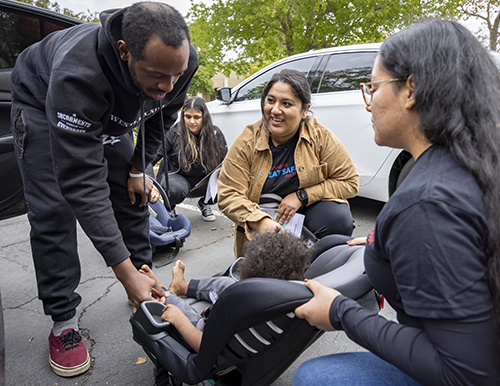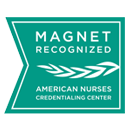Rideshare services like Uber and Lyft, along with taxi services, have become a common mode of transportation in urban areas including Sacramento.
But what do families need to know when traveling with their children?
Current car seat laws in California require:
- All children under the age of 8 years old or 4 feet 9 inches tall to be transported in the backseat of the vehicle in an appropriate child seat.
- Children younger than 2 years or under 40 pounds to ride in a rear-facing car seat.
While California car seat laws apply to rideshare and taxi cab drivers, those companies are not required to provide car seats for child passengers.
“Whether taking a quick trip to the airport or travelling from hotel to an amusement park, parents should bring a car seat for every child. They should make sure it’s properly secured in the rideshare or taxi cab vehicle,” said Misael Chavarin, UC Davis Children's Hospital Kohl's Injury Prevention Program community educator.
Those travelling with children who plan to use a rideshare or taxi service should follow these safety tips:
- When ordering a ride, include a message to the driver that you are travelling with a child in a car seat.
- Before the driver arrives, check the model of the vehicle to make sure it will accommodate the type and number of car seats you have. This is especially important for rear-facing car seats, which may not fit into smaller vehicles. Consider paying the additional fare for a larger vehicle.
- Make sure you know how to install your car seat with both the LATCH system and the vehicle seatbelt. One may work better that the other to secure your car seat in the rideshare vehicle.
- Refresh your installation skills by watching a quick video on how to install your rear-facing seat, forward-facing seat, or booster seat.
- Plan ahead for how you will keep your child safe while you are installing the car seat. Rideshare and taxi cab services are used most often in busy urban areas with heavy traffic nearby.
Check out the UC Davis Trauma Prevention Program Child Passenger Safety web page for more information on car seat safety and installation tips.

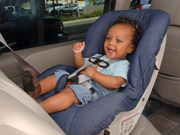 For infants and toddlers, choose a child safety seat from these types:
For infants and toddlers, choose a child safety seat from these types: 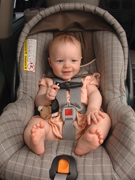 The harness straps in the child safety seat are passed through the openings at or just below the top of the baby’s shoulders.
The harness straps in the child safety seat are passed through the openings at or just below the top of the baby’s shoulders.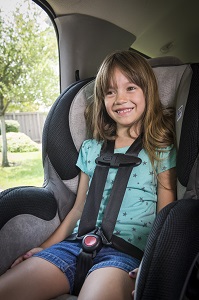 Safety tips
Safety tips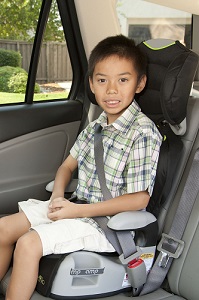 For school-aged children, choose a child safety seat from these types:
For school-aged children, choose a child safety seat from these types: Must be used with lap and shoulder belt.
Must be used with lap and shoulder belt. For older children, be sure your child meets the following guidelines:
For older children, be sure your child meets the following guidelines: LATCH is a system that makes child safety seat installation easier – without using seat belts. LATCH is required on most child safety seats and vehicles manufactured after Sept. 1, 2002.
LATCH is a system that makes child safety seat installation easier – without using seat belts. LATCH is required on most child safety seats and vehicles manufactured after Sept. 1, 2002.